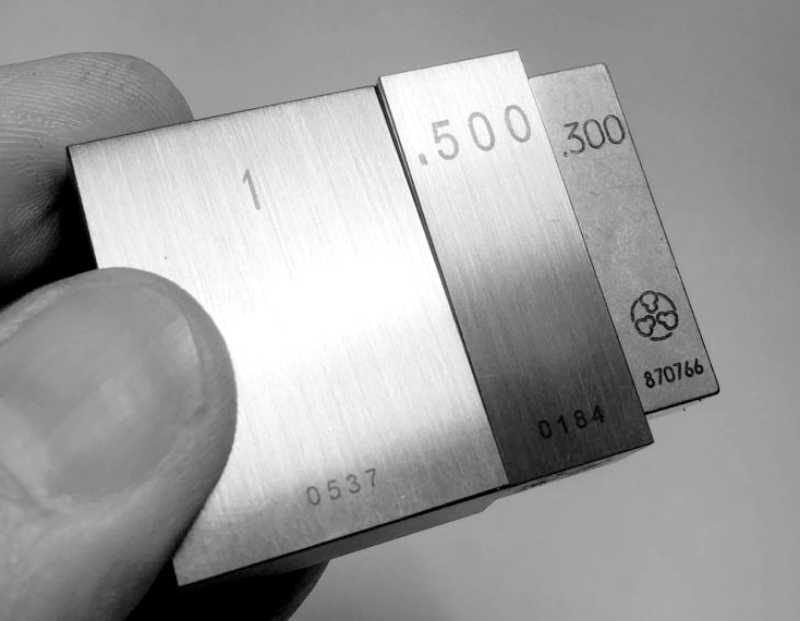Gauge Block Wringing
Table of Contents
I will talk about the breaking strength of other materials which, unlike ropes and most woods, do not have a filamentous structure.
I think that the coherence of these bodies is produced by 2 other causes:
- The repugnance of nature against a void.
But this repugnance is not sufficient. And so I create cause 2.
If you take 2 highly polished and smooth plates of marble, metal, or glass and place them face to face, one will slide over the other with the greatest ease.
- This shows that there is nothing of a viscous nature between them.
But when you try to separate them, the plates exhibit such a repugnance to separation.
The upper one will carry the lower one with it and keep it lifted indefinitely, even when the latter is big and heavy.
This experiment shows the aversion of nature for empty space, even during the brief moment required for the outside air to rush in and fill up the region between the 2 plates.

If 2 plates are not thoroughly polished, their contact is imperfect. If you separate them slowly, the only resistance offered is that of weight.
But if you pull them apart suddenly, the lower plate rises but quickly falls back.
- It follows the upper plate only for that very short time required to expand the small amount of air remaining between the plates.
- This air is the consequence of them not fitting and the outside air entering.
This resistance exhibited between the 2 plates:
- is likewise present between the parts of a solid
- enters partly as a concomitant cause of their coherence.
The lower plate follows the upper one and lifts it rapidly.
Contrary to the opinion of many philosophers including Aristotle, motion in a void is not instantaneous.
If the motion were instant then the 2 plates would separate without any resistance.
This is because the same instant of time would suffice for:
- their separation and
- the surrounding medium to rush in and fill the void between them.
But the lower plate follows the upper one.
This means that:
- motion in a vacuum is not instantaneous
- between the 2 plates, a void really exists at least for a very short time
This void is enough to allow the surrounding medium to rush in and fill that void.
If there were no void, there would be no need of any motion in the medium.
Thus, a void is sometimes produced by violent motion or is contrary to the laws of nature.
But I am not entirely satisfied with this explanation because the plates separation precedes the formation of the void which is produced because of this separation.
I do not see how the adhesion of 2 plates and their resistance to separation is caused by a void when this void is yet to follow.
I see that you accept this axiom of Aristotle.
He also wrote that Nature undertakes only that which happens without resistance.
This solves your problem.
Since nature abhors a vacuum, she prevents that from which a vacuum would follow as a necessary consequence.
This is how nature prevents the separation of the two plates.
Yes. This very resistance to a void is sufficient to hold together the parts of stone or metal or any other solid which is knit together more strongly and which is more resistant to separation.
Why is not this void which really exists a sufficient cause for all kinds of resistance?*
Superphysics Note
The void which acts as a sufficient cause in the case of the 2 plates is not alone sufficient to bind together the parts of a solid cylinder of marble or metal which, when pulled violently, separates and divides*.
Superphysics Note
If 1 million gold each year from Spain were not sufficient to pay the army, it might not be necessary to make provision other than small coin for the pay of the soldiers.
But go ahead, Salviati. Show us your method of separating the action of the vacuum from other causes.